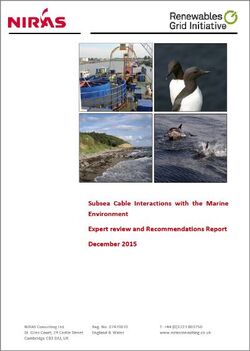The report identifies possible knowledge gaps, such as the effects of electromagnetic fields and thermal radiation, and recommends a set of options and actions for subsea cable stakeholders to take forward, including:
- improved procedures at the outset of project planning and knowledge sharing;
- improved guidance on environmental impact assessment (EIA), including EIA scoping and cumulative effect assessment;
- focus on research areas that could lead to a better understanding of different consenting requirements across countries;
- addressing knowledge gaps identified by current literature, the industry and relevant stakeholders;
- updating currently available "good-practice" guidelines with stakeholders' consultation and input to encourage industry engagement.
The development of two different tools was also considered as an outcome of the report:
I) an installation tool factsheet outlining the estimated level of disturbance for each tool and which installation tools are suitable for which habitat type;
II) a singular data register outlining what environmental data is available – and to whom, which organisations have ownership of specific data sets and what data is available for purchase.
The report as well as an abridged version and the full interview scripts can be downloaded below.
Contact

Cristina Simioli
Director - Offshore Energy and Nature
cristina[at]renewables-grid.eu


